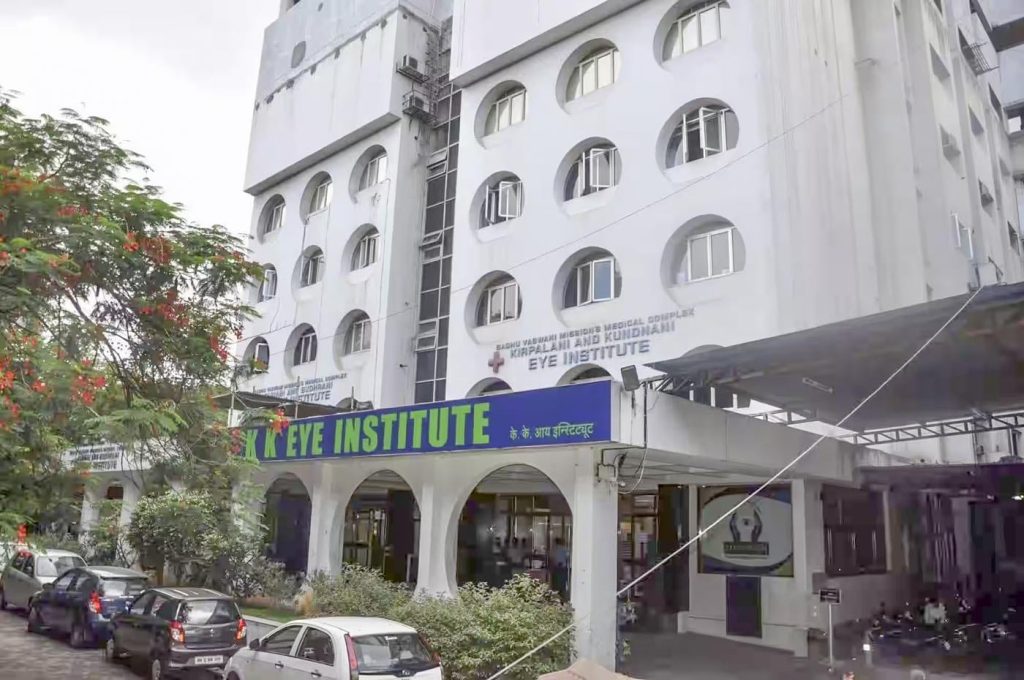K K Eye Institute developed a financial model to provide large numbers of people–regardless of personal income level–with the best eye care available
By Lavina Melwani, New York
all photos: courtesy kk eye institutet
During my recent visit to the bustling city of Pune in Maharashtra, I received a real-life lesson in how the contours of an entire community can be remade to include everyone—the haves and the have-nots—and where caring and compassion can become a part of the ecosystem. Wealth does not come into the equation.
Our eyesight is a God-given gift which we often take for granted when we have it; when we lose it, the world is plunged into darkness and chaos. So many types of blindness and near-blindness are curable with the cutting-edge technology and vast medical knowledge in our world today. Yet, for the forgotten millions mired in poverty and ignorance, living in scattered villages with no or inadequate eye care, loss of sight can become a chilling fact of life.
Take the case of the village child who has developed hard cataracts in both eyes—he does not know what is happening as darkness sets in—the world recedes until he can no longer see the colors of the kites or the faces of the children flying them. Then there are the older villagers who can no longer see enough to do their daily tasks or tend to their grandchildren. In their ignorance, they attribute it to karma or old age, but the cause may be as simple and treatable as glaucoma or adult cataracts.
What would be their chances of seeing the best eye surgeons or getting operated on with the cutting-edge equipment in a state-of-the-art facility? They, who are illiterate, have zero bank balances, not even the money to buy shoes, let alone a bus ticket to the big city?

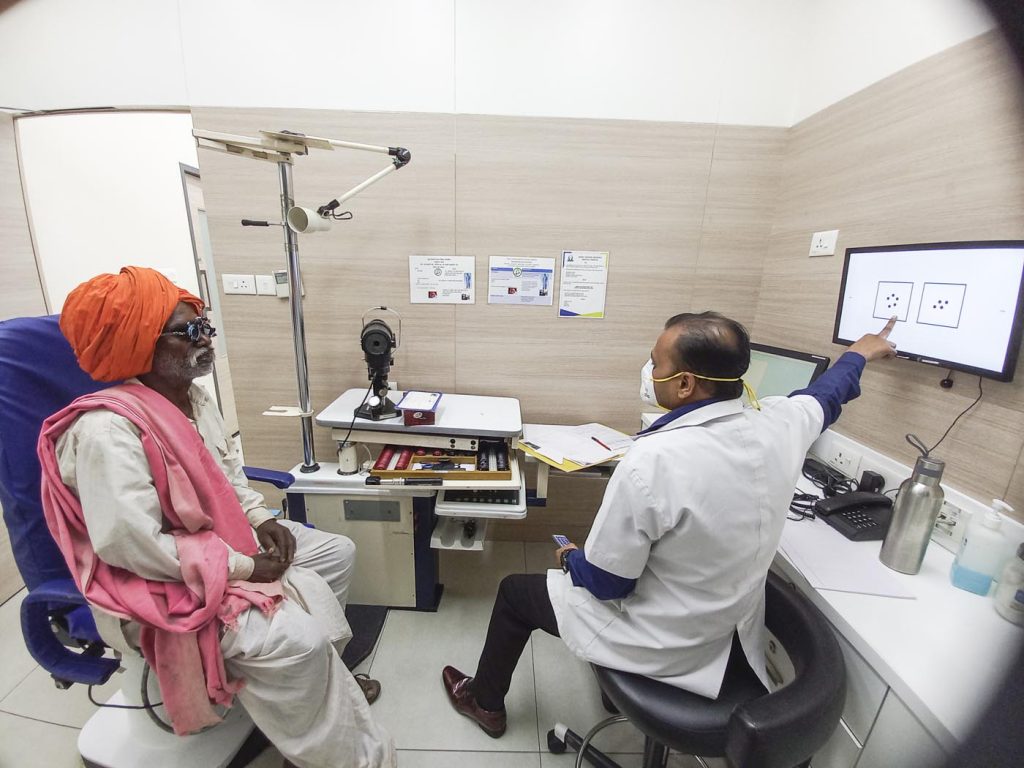
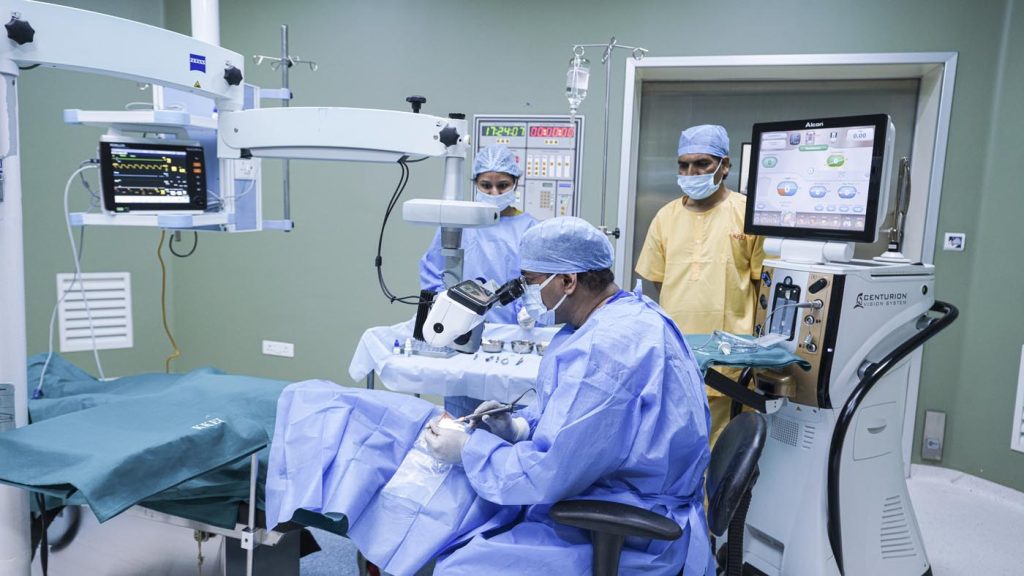

Dada J.P. Vaswani’s Solution
What would have been an unrealistic and impossible dream is now a reality for thousands of villagers, thanks to the Kirpalani and Kundnani Eye Institute, commonly called K K Eye Institute, operated by the Sadhu Vaswani Mission. This impressive award-winning hospital, named after its original donors, is set in the exclusive area of Koregaon Park. It is one of India’s top eye hospitals, where the wealthy flock for the best eye care from top-notch surgeons. Its financial success enables it to offer totally free treatment to the thousands of villagers in the surrounding areas who have neither the bank balance nor the power to gain access. The truly remarkable thing is that they are availed the same doctors, the same equipment and the same treatment as the paying clients.
K K Eye Institute is the creation of Dada J. P. Vaswani (1918-2018), who always believed that the noblest charity is netra daan—giving sight to the sightless. It has received a Special Appreciation award from the All India Ophthalmology Society, a national body of 26,000 ophthalmologists, for its high standard of eye care services to the population of Pune.
As Renu Wadhwa, the CEO, explains, it is a nonprofit organization but has both a paying and non-paying section. The paying patients are from Pune city; the non-paying section is predominantly run through the Sight for the Sightless Initiative, with a patient base from the adjacent rural area.
Wadhwa explains the unique model: “Our operative volumes are approximately 45 surgeries a day, 1,200 a month, that is split between a six-percent premium segment paying us$183 and above per surgery, a 44-percent segment paying $80 per surgery and the balance being served at no charge.” In this way the forgotten middle class are treated at a lower price and the poor pay nothing—all for the same state-of-the-art services.
The hospital has eight full-time ophthalmologists. Each, along with general ophthalmology, practices an additional sub-specialty such as glaucoma, cornea, pediatrics, medical retina, cataract or refractive surgery. There are also three visiting specialists for retinal surgeries and one visiting surgeon for oculoplasty (plastic surgery involving the eye area, either to repair injuries or for cosmetic purposes).
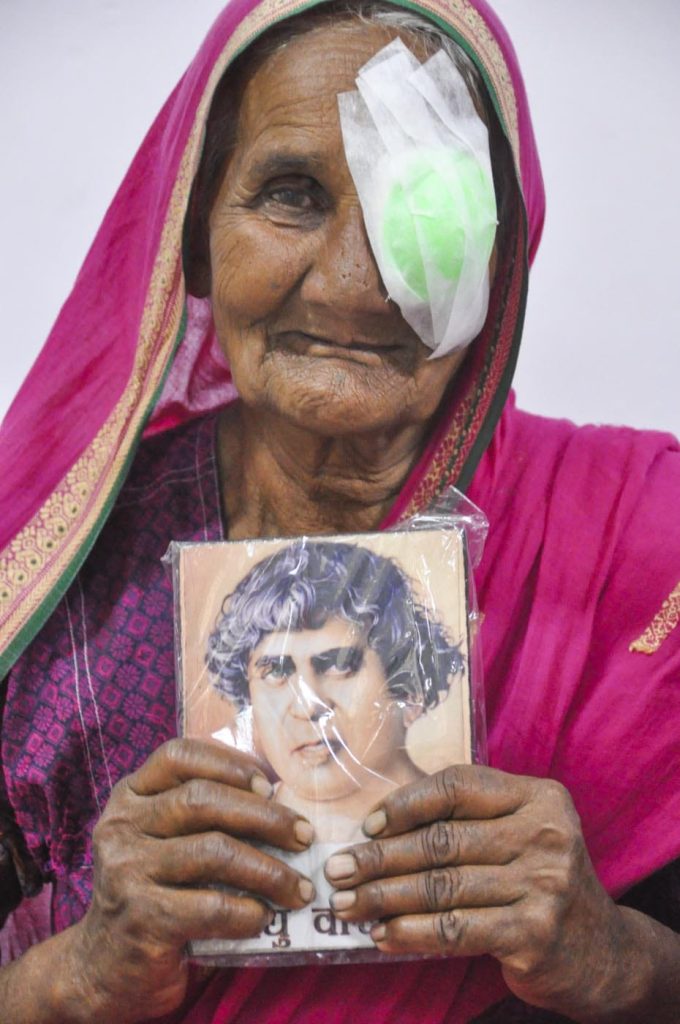
Reaching Rural Areas
The Institute’s Sight for the Sightless Initiative specifically helps rural populations, treating visual disorders related to squint, cataract, retina, pterygium (aka “surfer’s eye,”caused by UV rays) and the cornea. One related program, called “Bright Eyes,” provides glasses at reduced cost.
Indeed, if the poor cannot go to the hospital, the hospital comes to them. First a van with a loudspeaker system travels to remote, scattered villages, distributing flyers and announcing an eye camp. Scores of villagers, old, young and middle-aged, turn up to have their eyesight checked. Over the years, 140,000 people spread across hundreds of villages have been checked for poor vision, shortlisted for surgery and brought to the Institute by bus.
A series of screen grabs from the promotional video, “I Have a Coloured Dream,” focusing on a young boy with advanced cataracts who regained his sight:
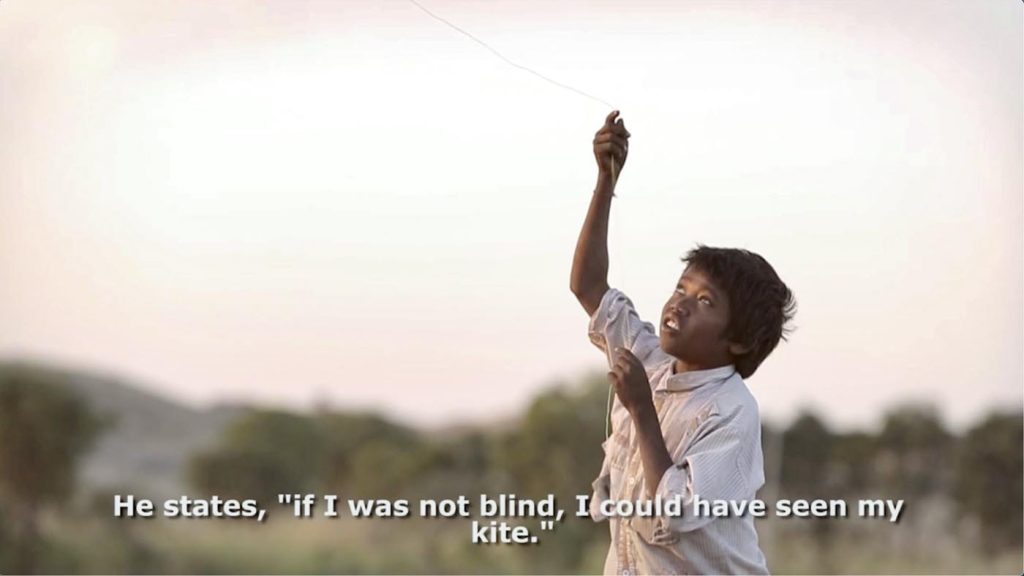
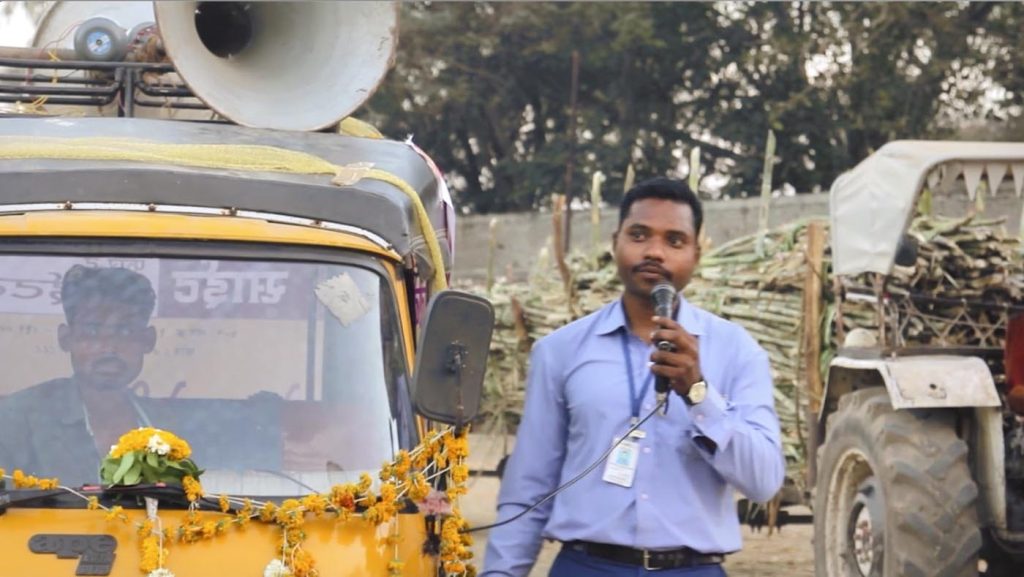
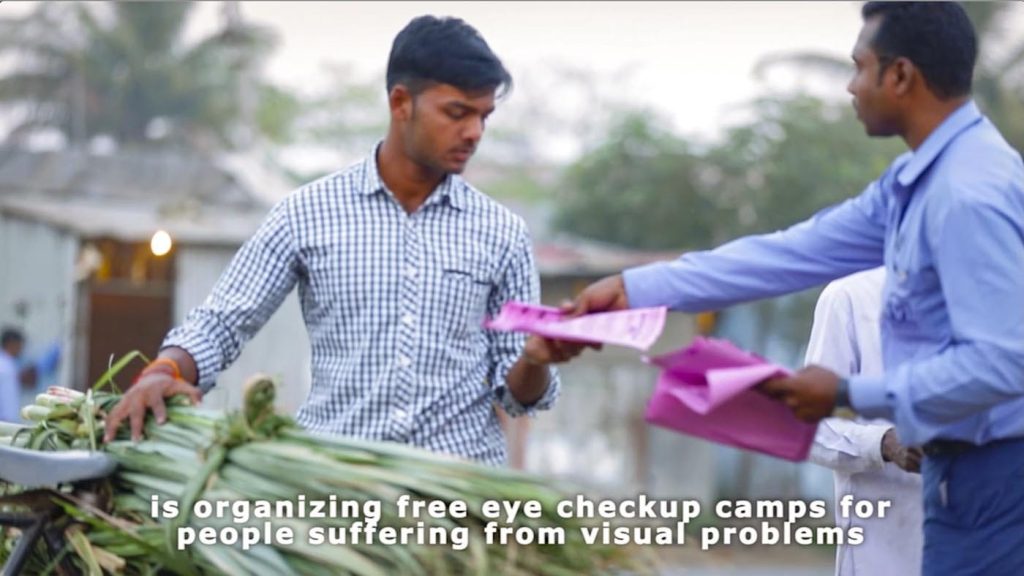
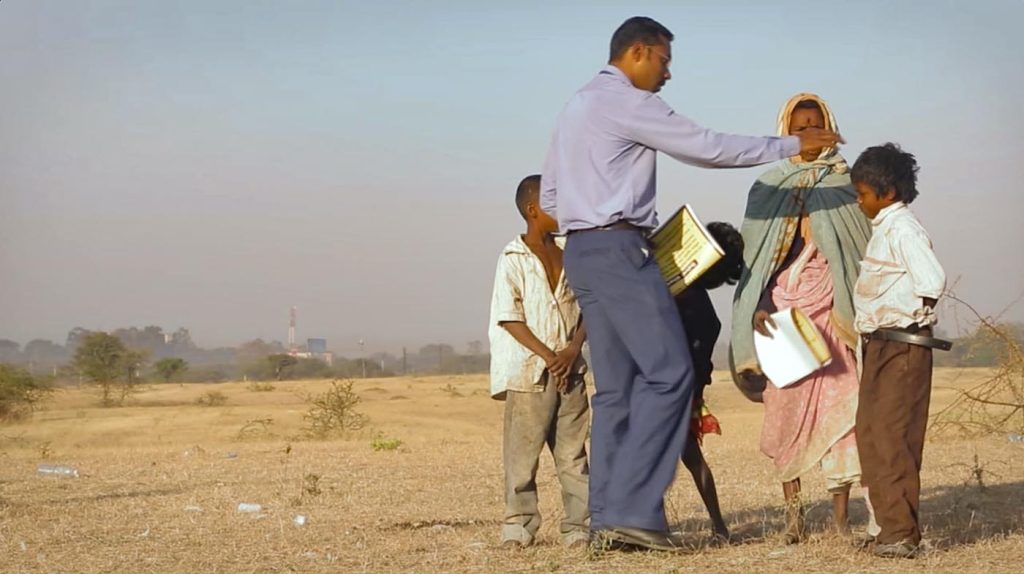
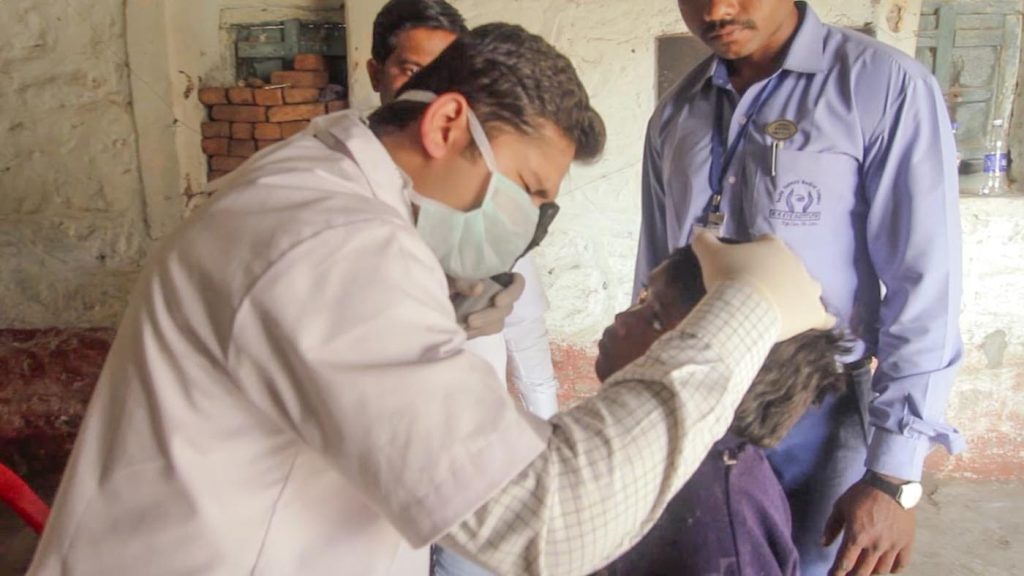
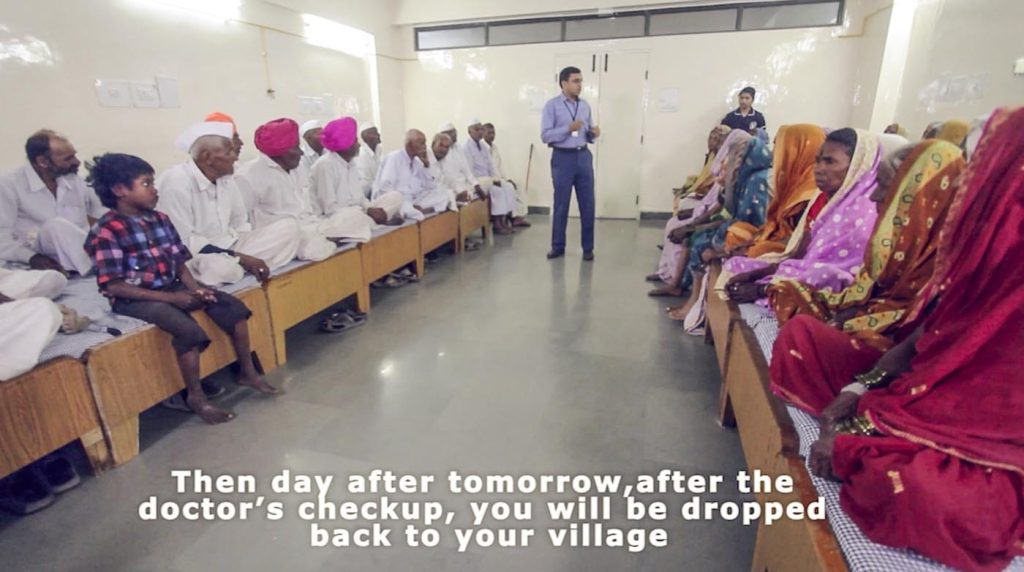

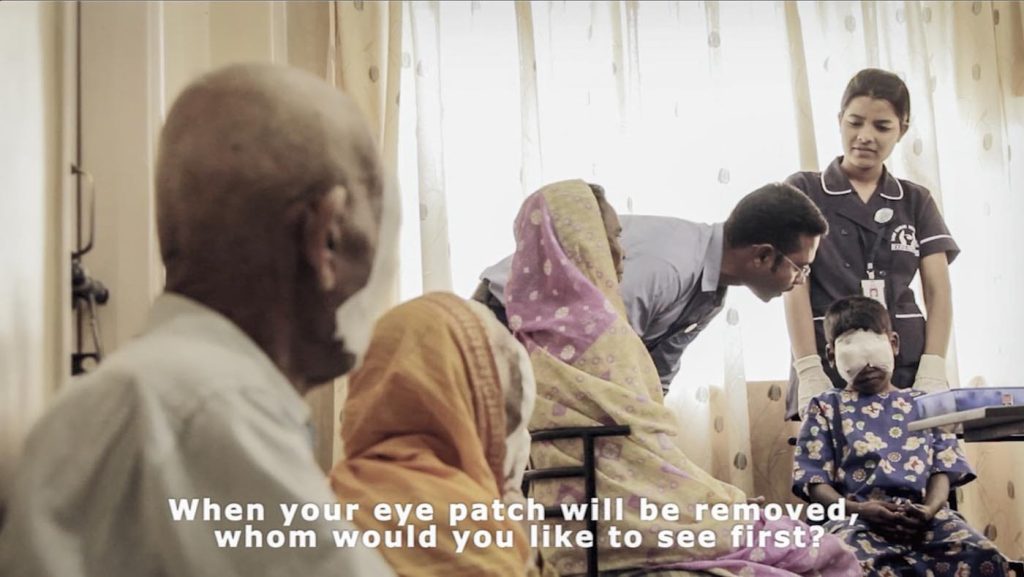
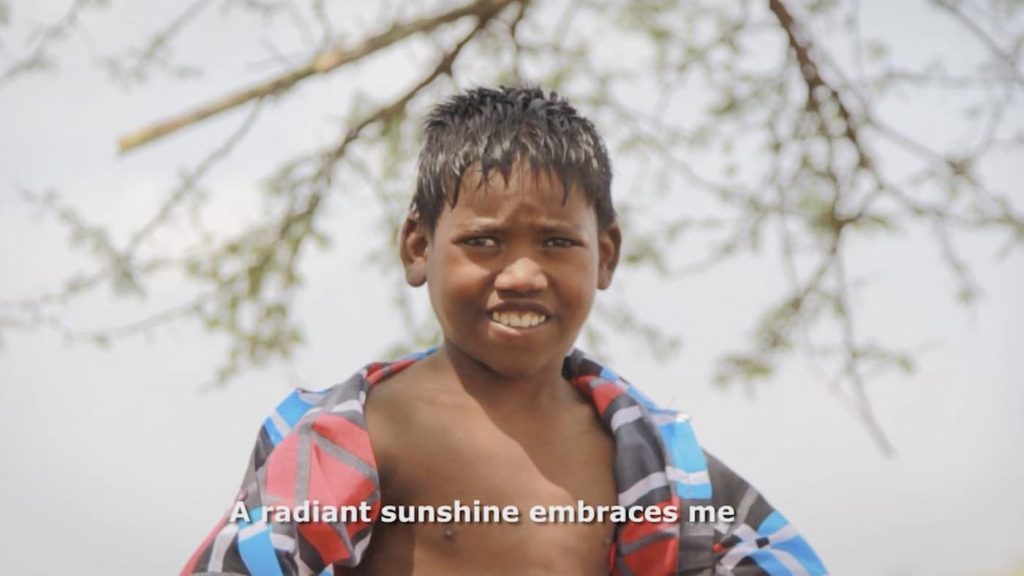
As Wadhwa explained: “They are given a detailed round of ophthalmic and medical investigations to be cleared for eye surgeries which include glaucoma, blocked tear duct, retina issues, congenital cataract and adult cataracts, which are most common.”
The patients are operated on with top-of-the line equipment by expert surgeons, counseled and taught how to take care of their eyes after the surgery, with dispensed eye drops and medicines to be used post-surgery. Then they are bused back to their villages, their eyesight restored. They do not have to give anything for this care.
The children’s part of the project, called Dekhna Hai Mujhe (I Wish to See!), has taken within its fold over 108,900 children from underprivileged backgrounds.
As a co-founder of Children’s Hope India, a NY-based nonprofit organization which supports Sight for the Sightless Initiatives, I visited a Marathi medium public school where the children had benefited from the eye camps. I met with children who had been identified with eye issues and they smiled shyly, proud of their new spectacles. The teachers emphasized how these eye exams detect problems and ensure the children do not suffer from more serious eye ailments.
Exploring the Institute
I then visited the K K Eye Institute, 38,000 square feet across seven floors, which has over 200,000 eye surgeries and consultations with over 776,000 patients to its credit. The hospital is cutting-edge, not only in its techniques and equipment but also in beliefs and temperament: It was founded on Dada’s beliefs of caring and compassion. Right in the lobby you sense the spiritual heartbeat of the institution. Images of different faiths and of Sadhu and Dada Vaswani circle the lobby’s perimeter, creating a soothing sanctuary. Here you can light an oil lamp as you pray to the Almighty to dispel the darkness.
I then got to meet the dynamic young CEO, Renu Wadhwa, who is so passionate about the hospital that she practically lives and breathes all aspects of the institution. In her round-the-clock work schedule she had fit me in to share a quick vegetarian lunch in her office. This was the same food being served to all their patients that day; the healthy menu included dal, spinach, rice and flat bread, okra and yogurt.
I was curious about the success of this award-winning hospital and the unique model that it follows. So I asked her what made K K Eye Institute’s Sight for the Sightless Initiative different from other leading charitable hospitals. She quoted several factors, the main criteria being that only senior surgeons perform all surgeries, be they paid or unpaid clients: “All surgeons are fully qualified in ophthalmology and have performed a minimum 500 surgeries. There are reviews of their past surgeries before they operate on patients.”
A comprehensive panel of pre-operative tests, such as blood, are done for every patient, whether they are free or paying patients, and the same sophisticated equipment is used for all diagnostics, procedures and surgeries. For every patient there are audits to ensure that quality care and support services have been provided.
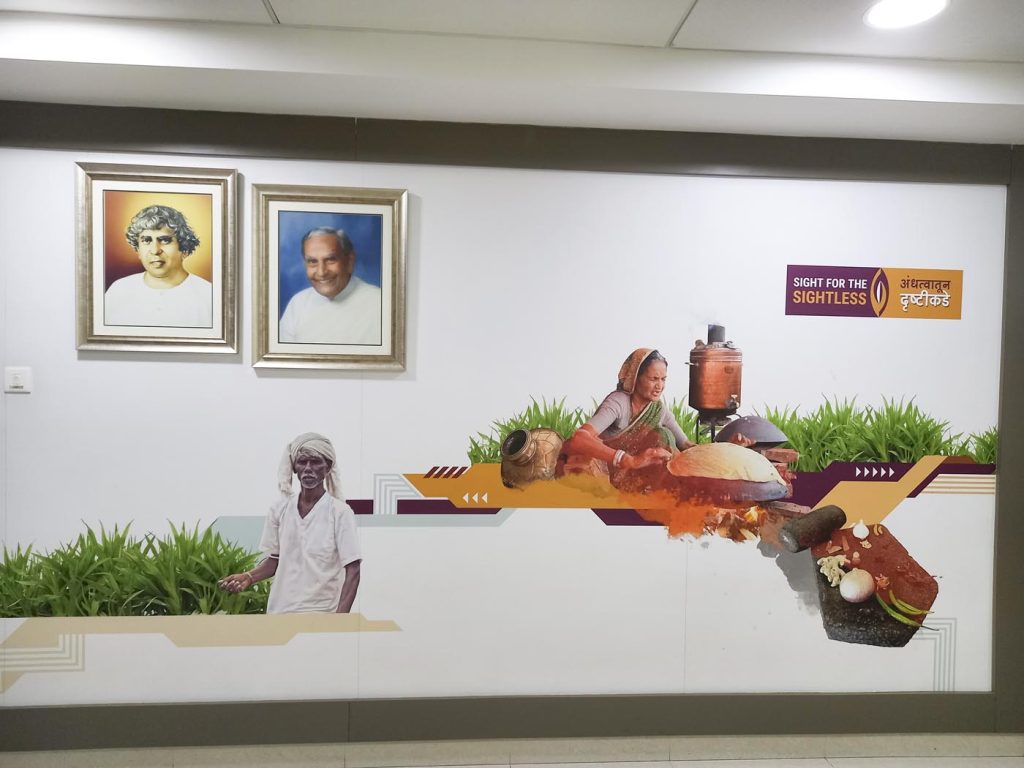
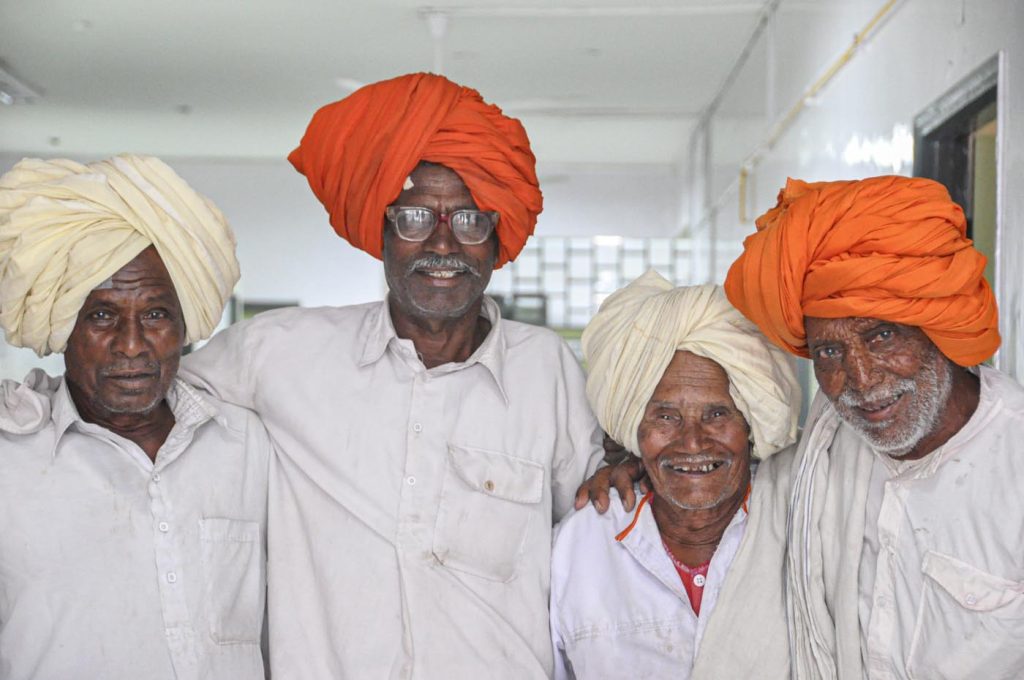
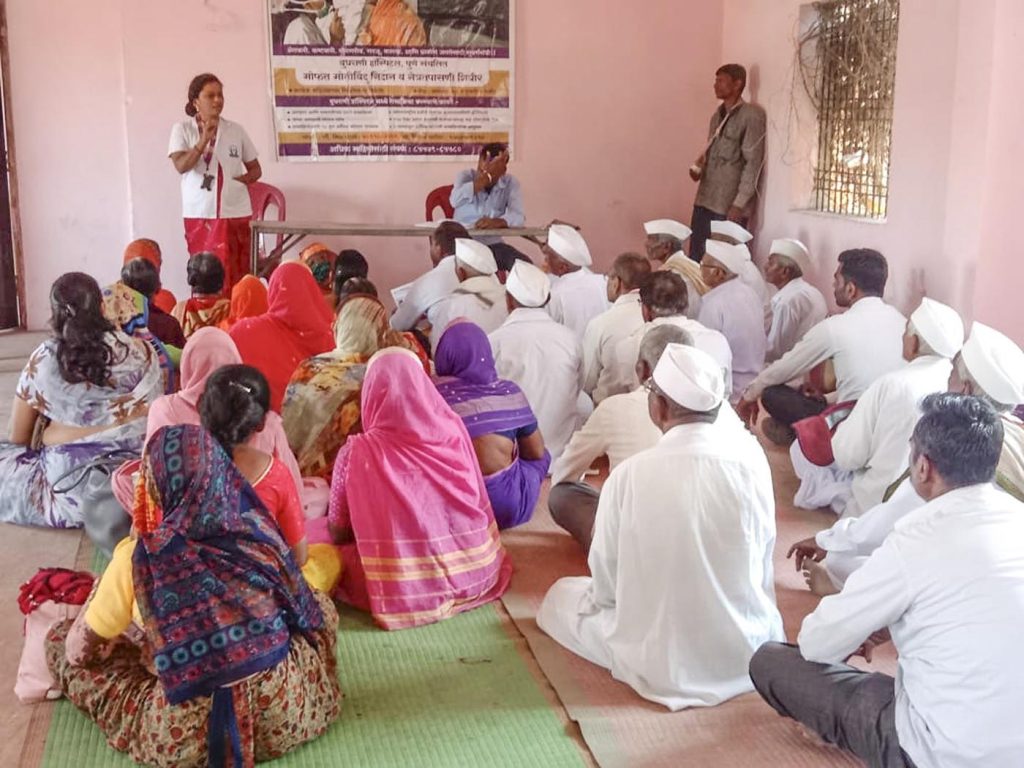
Wadhwa explained that the communications are adapted to villagers’ understanding and needs, providing pictorial instructions and creating a simple rural tenor to the surroundings which makes them feel at home and comfortable. They are even given demonstrations on how to open a bottle of eye drops.
Later I toured the various bustling clinics, with their busy teams of doctors, nurses and patients. I visited the private rooms as well as the public wards which were clean and airy with patients from the village relaxed on their beds. Hot home-style cooked meals are served for breakfast, lunch and dinner. At tea-time there is a welcome cup of chai and biscuits. As I was in their ward at tea-time, I was invited to serve them. There were toothless smiles and appreciative namastes as patients accepted the biscuits. Many had just undergone surgery and had their eyes bandaged. Tomorrow they would be back in their villages, their eyesight and independence restored.
The Hospital Business
Every room I visited in my tour seemed to have an aura of joy about it. Every doctor I met, every staff member had a smile, a sense of mission. The most illuminating conversation I had with Wadhwa was about how Dada Vaswani conceptualized the hospital.
The spiritual master created a business blueprint for building and running a successful hospital resting on five points: 1) the first and foremost is patient satisfaction, accomplished with respect and reverence; 2) The second is employee enthusiasm, so that the employees work as a united team cheerfully doing their duty; 3) The third is the ability to generate profits and manage; 4) The fourth is a growing market, the progress and popularity of the hospital; 5) and the fifth is continuous improvement, which includes maintaining state-of-the-art equipment. Dada asked the team to focus above all on the first point: to take care of each patient with respect and reverence.
That respect and reverence is possible because of the devotional aura that exists at the K K Eye Institute. “Satsang infuses a spiritual energy within and around an individual,” Wadhwa explained. “Our satsang at K K Eye Institute, held every month, is an attempt to align the team to a higher consciousness. Kirtans rendered in sweet simplicity create a charged vibration; a spiritual message from our beloved Dada Vaswani reiterates tips for righteous living. The satsang is nondenominational in its approach. Tuning in to a divine dimension we believe will help us be more aware and assertive in the choice between the ‘right’ and the ‘wrong.’ This ultimately helps us in providing better patient care.”
Indeed, at the eye institute, that respect and reverence exists for even inanimate objects: every Dussehra (Vijayadashami, the day after the end of Navaratri) the staff and medical team perform a special puja to express gratitude and reverence towards their machinery and equipment, symbolizing the presence of the Divine in the inanimate principle.
For any impoverished man, woman or child suffering from waning sight in Pune, there is hope. The road leads straight to the K K Eye Institute, where they are met with a welcoming hot meal, caring and compassion—and the gift of sight.

About the Author
Lavina Melwani is a New York-based journalist who has written on the arts, spirituality and life for several international publications. She reports on the Indian diaspora for The Week and is a co-founder of Children’s Hope India. She blogs at www.lassiwithlavina.com. You can follow her @lassi_with_lavina
